 St ? Now Oude Kerk Volksmuseum |
|||
|
|||
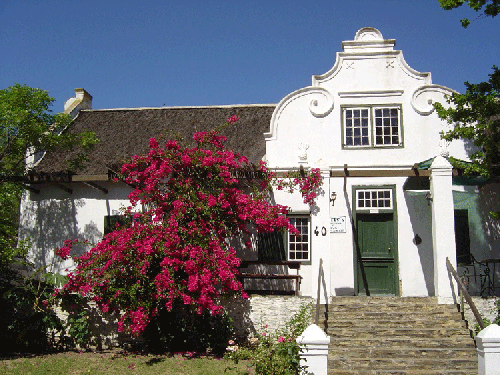 |
|||
|
|
|||
|
Exterior of Tulbagh
Church. |
|||
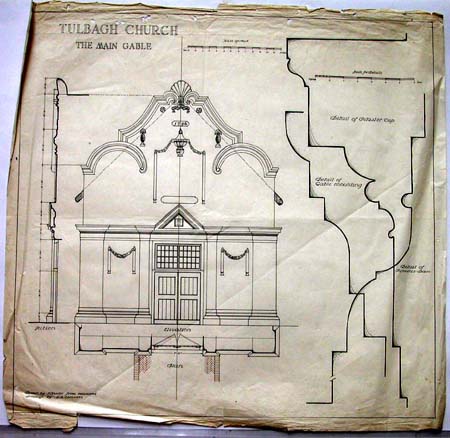 |
|||
|
Measured
by (can't read), drawn J Fassler |
|||
|
Pearse 1933:49 (drawing on material from FM Glennie) writes: The church in Tulbagh was begun in 1743 … we are told, took five years to build. … The date on the gable is 1796, which indicates that in the original building, as was usual, no gables were employed and that this gable was constructed at a time when many of the important country houses and public buildings were being embellished with the rich gables. The church is cruciform in plan, with galleries at the west end and one over each of the transepts, but the original stair and floor are missing. The nave has an ordinary mud floor with an open thatch roof of interesting construction in indigenous timber, in sound condition. The walls, 2’ 6” thick are of brick laid in clay mortar and plastered. The original doors and windows remain, but most of the fittings are missing. … It was owing to the efforts of Lady Beck that the church, which is now used as a museum, has been restored by Mr FM Glennie, from who the above description was obtained. |
|||
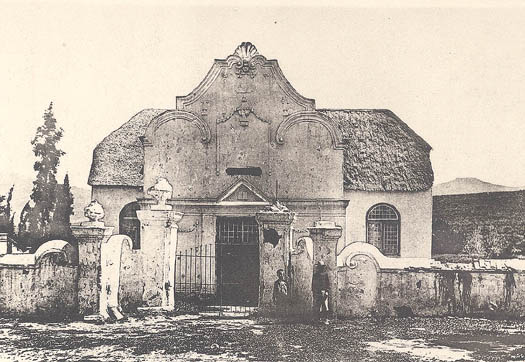 |
|||
| Not a great deal of difference, then and now! | |||
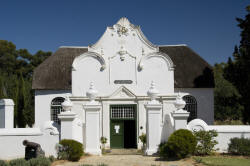 |
|||
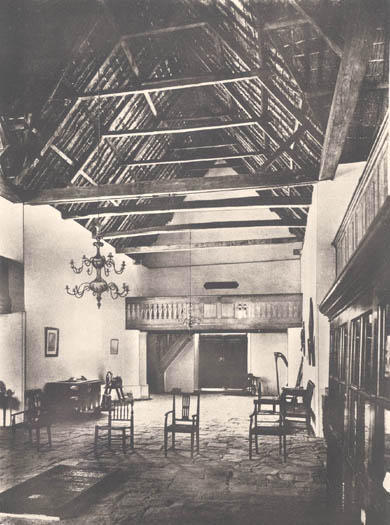
|
|||
| The two-tier candelabrum is notable piece of brass-work of the period. | |||
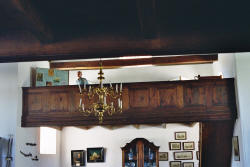 |
|||
|
Compare the restoration with the original building before the earthquake |
|||
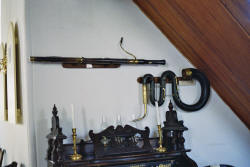 |
|||
|
Bassoon and Serpent used in church services in the absence of an organ, no doubt supplanted by the harmonium which is just visible beneath them. |
|||
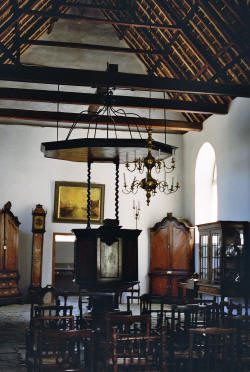
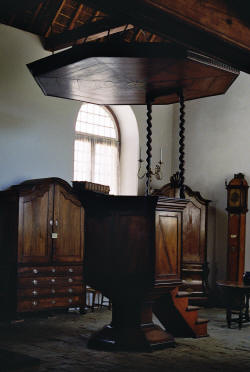 |
|||
|
Three different views of the pulpit with its sounding board over. |
|||
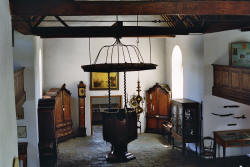 |
|||
|
It was only about 300 years ago when, after
a land grant by the Dutch Colonial Government to a more or less equal
number of Dutch and Huguenot settlers to settle the area, was the town of
Tulbagh founded. The town developed slowly and over time and in the period
many notable examples of Cape Dutch, Victorian and Edwardian houses and
other buildings such as Die Oude Drosdy (the original colonial
Magistrate's complex) were built in the valley. Many of these lovely
buildings were destroyed in an earthquake in 1969 but quite a number did
survive the catastrophe. Many notable examples of the Cape Architecture of
the time still exist on farms throughout the valley although in some cases
they have been altered or repaired and also modernized. The authentic
buildings are sadly few. In the famous Church Street however, all the
houses in the street were restored to almost original condition after the
earthquake.
Church Street is now graced by the
largest number of original Cape- Dutch, Edwardian and Victorian
National Monuments in one street in South Africa and is a major
tourist attraction of the town to the present day. To take a walk down
Church Street is akin to walking through a page in history. |
|||
|
The above
history was taken from
http://www.tulbagh.net/tulbagh_historical_.htm
Please visit this site for further details. |
|||
|
The Valley was first discovered in 1658 by
Pieter Potter, Surveyor General to Jan van Riebeeck, the first Governor of
the Cape. Fourteen farmers settled here in 1700, but the town was only
developed in 1943, when the first church was built. Tulbagh became well
known after the big earthquake, on the 29th of September 1969, when most
damaged buildings in the present Church Street, were restored to their
original form — all were declared National Monuments. There are 32
of these buildings, constituting the largest
concentration of National Monuments in one street in South Africa. The old
Church, presently the museum as well as an annex to the newer museum, is
the focal point of interest to many visitors. |
|||
|
The above
history was taken from
http://www.route62.co.za/index.html |
|||
|
|||
 |
|||
|
Colour Pictures kindly supplied by Rachel Jordan |
|||
|
|
|||
|
|
|||